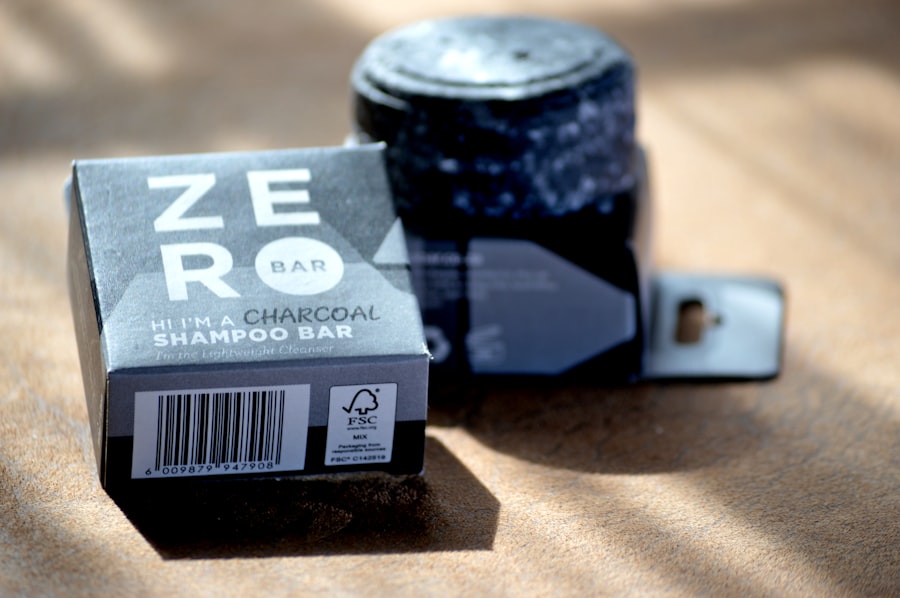Ozempic, a medication primarily used to manage type 2 diabetes, has gained significant attention for its ability to aid in weight loss. As you explore the world of diabetes management and weight control, it’s essential to understand how Ozempic works. This injectable medication mimics the effects of a hormone called GLP-1, which helps regulate blood sugar levels and appetite.
By enhancing insulin secretion and slowing gastric emptying, Ozempic can lead to reduced hunger and increased feelings of fullness. However, while it can be effective, it’s not the only option available for those looking to manage their weight or blood sugar levels. As you consider alternatives to Ozempic, it’s crucial to recognize that lifestyle changes can also play a significant role in achieving your health goals.
Various medications and natural supplements can help manage blood sugar levels and promote weight loss. Options such as metformin, GLP-1 receptor agonists, and even lifestyle interventions like diet and exercise can be effective. Understanding these alternatives allows you to make informed decisions about your health journey, ensuring that you choose the best path for your individual needs.
Key Takeaways
- Ozempic is a medication used to treat type 2 diabetes and has alternatives available.
- Making healthy food swaps is important for managing diabetes and overall health.
- The best Ozempic alternative should be identified based on individual needs and preferences.
- Whole foods should be incorporated into the diet for their nutrient density and health benefits.
- Choosing low glycemic index foods can help regulate blood sugar levels and improve overall health.
The Importance of Making Healthy Food Swaps
When it comes to managing your health, the food choices you make can have a profound impact on your overall well-being. Making healthy food swaps is a simple yet powerful strategy that can help you reduce calorie intake, improve nutrient density, and support weight loss or blood sugar management. For instance, replacing white bread with whole grain options not only enhances fiber intake but also provides essential nutrients that are often stripped away in processed foods.
By consciously choosing healthier alternatives, you can create a more balanced diet that supports your health goals. Moreover, healthy food swaps can be enjoyable and satisfying. You might find that substituting sugary snacks with fresh fruits or nuts not only curbs cravings but also provides lasting energy.
Experimenting with different ingredients can lead to discovering new flavors and textures that you love. As you embark on this journey of making healthier choices, remember that small changes can lead to significant results over time. Each swap you make is a step toward a healthier lifestyle.
Identifying the Best Ozempic Alternative

Finding the best alternative to Ozempic requires careful consideration of your specific health needs and lifestyle preferences. One option could be other medications that target similar pathways in the body, such as semaglutide or liraglutide, which also belong to the GLP-1 receptor agonist class. These medications may offer similar benefits in terms of blood sugar control and weight loss.
However, it’s essential to consult with your healthcare provider to determine which option is most suitable for you based on your medical history and current health status. In addition to pharmaceutical alternatives, lifestyle modifications can serve as powerful tools in managing diabetes and weight. Incorporating regular physical activity into your routine can enhance insulin sensitivity and promote weight loss.
Furthermore, adopting a balanced diet rich in whole foods can significantly impact your overall health. By focusing on nutrient-dense foods and making informed choices, you can create a sustainable approach to managing your condition without solely relying on medication.
Incorporating Whole Foods into Your Diet
| Whole Foods | Benefits |
|---|---|
| Fruits and Vegetables | Rich in vitamins, minerals, and fiber |
| Whole Grains | Provide sustained energy and fiber |
| Lean Proteins | Support muscle growth and repair |
| Healthy Fats | Support heart health and brain function |
Whole foods are the cornerstone of a healthy diet, providing essential nutrients without the additives and preservatives found in processed options. As you strive to improve your eating habits, consider incorporating more whole foods into your meals. Fresh fruits, vegetables, whole grains, lean proteins, and healthy fats should form the basis of your diet.
These foods not only nourish your body but also help regulate blood sugar levels and support weight management. When you prioritize whole foods, you’re also likely to consume fewer empty calories. For example, swapping out sugary cereals for oatmeal topped with fresh berries can provide sustained energy throughout the morning while keeping your blood sugar stable.
Additionally, experimenting with seasonal produce can add variety to your meals and introduce new flavors. By embracing whole foods, you’re not just making a dietary change; you’re adopting a lifestyle that promotes long-term health and well-being.
Choosing Low Glycemic Index Foods
The glycemic index (GI) is a valuable tool for understanding how different foods affect blood sugar levels. Foods with a low GI are digested more slowly, leading to gradual increases in blood sugar rather than sharp spikes. As you navigate your dietary choices, focusing on low GI foods can be particularly beneficial for managing diabetes and promoting weight loss.
Examples include legumes, non-starchy vegetables, whole grains, and most fruits. Incorporating low GI foods into your meals can help you maintain steady energy levels throughout the day while reducing hunger pangs. For instance, pairing a low GI carbohydrate like quinoa with lean protein and healthy fats creates a balanced meal that keeps you satisfied longer.
By making conscious choices about the types of carbohydrates you consume, you can take control of your blood sugar levels and support your overall health.
Opting for Lean Protein Sources

Protein is an essential macronutrient that plays a crucial role in building and repairing tissues, as well as supporting metabolic functions. When selecting protein sources for your diet, opting for lean options can help you manage calorie intake while still meeting your nutritional needs. Skinless poultry, fish, legumes, tofu, and low-fat dairy products are excellent choices that provide high-quality protein without excessive saturated fat.
Incorporating lean protein into your meals can also aid in weight management by promoting satiety. When you include protein-rich foods in your diet, you’re likely to feel fuller for longer periods, reducing the temptation to snack on unhealthy options. Additionally, protein has a thermogenic effect, meaning it requires more energy for digestion compared to fats or carbohydrates.
By prioritizing lean protein sources, you’re not only supporting muscle health but also enhancing your overall metabolic rate.
Selecting Healthy Fats and Oils
While fats have often been vilified in the past, it’s important to recognize that not all fats are created equal.
As you navigate your dietary choices, focus on incorporating sources of unsaturated fats such as avocados, nuts, seeds, and olive oil into your meals.
These fats can provide essential fatty acids that promote heart health while adding flavor and richness to your dishes. When cooking or preparing meals, consider using healthy oils like olive oil or avocado oil instead of butter or margarine. These oils not only enhance the taste of your food but also offer beneficial nutrients that support overall health.
Additionally, being mindful of portion sizes is key; while healthy fats are nutritious, they are also calorie-dense. By striking a balance between healthy fats and other macronutrients in your diet, you can create satisfying meals that nourish your body.
Incorporating Fiber-Rich Foods
Fiber is an often-overlooked component of a healthy diet that plays a crucial role in digestive health and blood sugar regulation. As you work toward improving your eating habits, aim to incorporate more fiber-rich foods into your meals. Fruits, vegetables, whole grains, legumes, nuts, and seeds are all excellent sources of dietary fiber that can help keep you feeling full while supporting healthy digestion.
Increasing your fiber intake can also have positive effects on blood sugar levels by slowing down the absorption of glucose into the bloodstream. This gradual release helps prevent spikes in blood sugar after meals. For example, choosing brown rice over white rice or adding beans to salads can significantly boost the fiber content of your meals.
By prioritizing fiber-rich foods in your diet, you’re taking an important step toward better health and well-being.
Avoiding Processed and Sugary Foods
Processed and sugary foods are often high in empty calories and low in nutritional value. As you strive for better health outcomes, it’s essential to minimize your consumption of these types of foods. Items such as sugary snacks, sodas, and fast food may provide temporary satisfaction but can lead to long-term health issues like obesity and diabetes if consumed regularly.
Instead of reaching for processed snacks when hunger strikes, consider healthier alternatives like fresh fruit or homemade energy bars made from whole ingredients. By preparing meals at home using whole foods, you have greater control over what goes into your body. This not only helps reduce added sugars but also encourages creativity in the kitchen as you experiment with new recipes and flavors.
Making Smart Beverage Choices
Beverages play a significant role in overall calorie intake and can impact blood sugar levels as well. As you work toward healthier eating habits, pay attention to what you drink throughout the day. Sugary drinks like sodas and sweetened coffees can contribute significantly to excess calorie consumption without providing any nutritional benefits.
Instead, opt for water, herbal teas, or infused water with fresh fruits for hydration without added sugars. If you’re looking for something with flavor but still want to keep it healthy, consider unsweetened beverages or those sweetened with natural alternatives like stevia or monk fruit. Additionally, if you’re a coffee or tea drinker, try limiting added sugars or creamers to keep those beverages as healthy as possible.
By making smart beverage choices, you’re not only reducing unnecessary calories but also supporting better hydration and overall health.
Creating a Balanced and Nutrient-Dense Meal Plan
Creating a balanced meal plan is an effective way to ensure you’re meeting your nutritional needs while working toward specific health goals like weight loss or blood sugar management. Start by incorporating a variety of food groups into each meal: aim for lean proteins, whole grains, healthy fats, fruits, and vegetables. This diversity not only provides essential nutrients but also keeps meals interesting and satisfying.
As you develop your meal plan, consider portion sizes and balance among macronutrients—carbohydrates, proteins, and fats—to create meals that sustain energy levels throughout the day. Planning ahead can help prevent impulsive food choices when hunger strikes; having healthy options readily available makes it easier to stick to your goals. By taking the time to create a thoughtful meal plan filled with nutrient-dense foods, you’re setting yourself up for success on your journey toward better health.
In conclusion, understanding Ozempic and its alternatives is just the beginning of a comprehensive approach to managing diabetes and achieving weight loss goals. By making informed dietary choices—such as incorporating whole foods, selecting low glycemic index options, opting for lean proteins and healthy fats—you’re taking proactive steps toward improving your overall well-being. Remember that small changes can lead to significant results over time; embrace this journey with patience and determination as you work toward a healthier lifestyle.
If you’re exploring food-based alternatives to Ozempic, you might find it helpful to read about various dietary approaches that can support weight management and blood sugar control. An article on this topic can provide insights into how certain foods and lifestyle changes can mimic the effects of medications like Ozempic. For more detailed information, you can check out this related article on Explore Senior Health, which offers a comprehensive look at natural alternatives and their benefits.
FAQs
What is Ozempic?
Ozempic is a prescription medication used to improve blood sugar control in adults with type 2 diabetes.
What are the potential side effects of Ozempic?
Common side effects of Ozempic may include nausea, vomiting, diarrhea, stomach pain, and constipation. More serious side effects can include pancreatitis, kidney problems, and allergic reactions.
What are food-based alternatives to Ozempic?
Food-based alternatives to Ozempic may include incorporating a healthy diet rich in fruits, vegetables, whole grains, lean proteins, and healthy fats. Additionally, regular exercise and weight management can also help improve blood sugar control.
How can diet and lifestyle changes help manage type 2 diabetes?
Diet and lifestyle changes can play a significant role in managing type 2 diabetes by helping to control blood sugar levels, reduce the risk of complications, and improve overall health. This can include following a balanced diet, engaging in regular physical activity, and maintaining a healthy weight.
Are there any specific foods that can help with blood sugar control?
Foods that can help with blood sugar control include high-fiber foods such as fruits, vegetables, and whole grains, as well as lean proteins and healthy fats. Additionally, foods with a low glycemic index can help prevent spikes in blood sugar levels.
